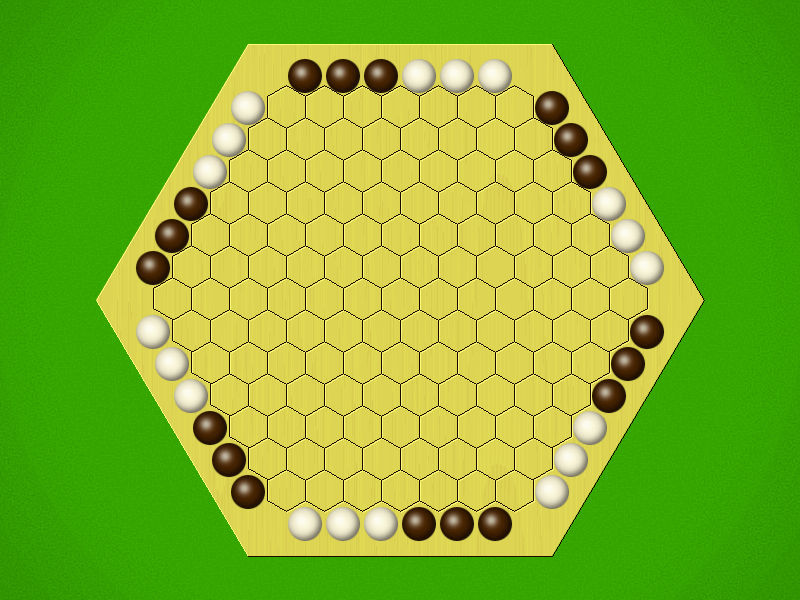Rules

Representative game (in the sense of being of mean length). Wherever you see the 'representative game' referred to in later sections, this is it!
Play
On each turn, a player places a single stone of his/her own colour into any empty cell; once placed, stones never move.
Goal
Play continues until the board is full or both players pass, at which point the game is scored. Any group of own-colour stones has a score equal to the number of exo-stones (stones lying outside the grid) that it contains. The owner of the highest scoring group wins.
If there is a tie for highest scoring group, then the tied groups are set aside and the remaining groups are compared; the owner of the highest scoring group among the remaining groups wins. If these groups are also tied, then the process is repeated (that is, the tied groups are set aside and the remaining groups compared) until a winner results. (It is impossible for group scores to be tied "all the way down.")
Pie Rule
The Pie Rule applies: After Player 1 plays the first stone to the board, Player 2 can decide whether to play his/her own colour to the board, or alternatively, switch colours with Player 1.





